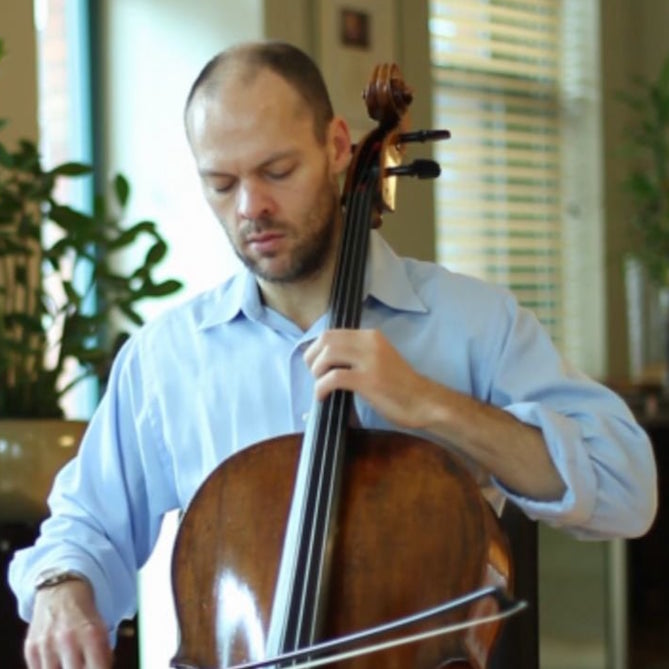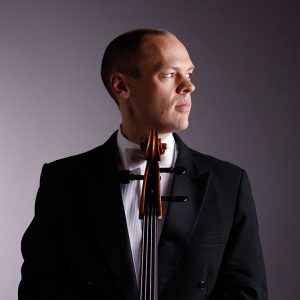
Finesse
Brant Taylor
Any musician who has interests outside the realm of music has probably discovered ideas and concepts important to other disciplines which are directly applicable to the study and performance of music. The lessons we can learn about greatness from outside our own field are often very powerful because the underlying principles tend to be universal and not confined to any single discipline. For the famed American chef Thomas Keller, there is one word he uses to describe his entire philosophy of approaching his craft at the highest level: finesse. Chef Keller apparently doesn’t want anyone who works for him to forget it—the word and its dictionary definition are emblazoned directly on the tiles above the entrance to the kitchen at Per Se, his high-end (and delicious) New York City restaurant:
For all its applicability to what we aspire to as musicians, finesse is not a word I recall hearing during my musical studies. To be sure, our time in music school is (hopefully) geared toward improving certain instrumental and communicative skills, but often our aim is, vaguely, to “get better” or “reach the next level”. I have found no better word or concept that encapsulates what we’re all aiming for. Exploring the idea of finesse has explicit implications which can pervade almost every aspect of our practicing, performing, and teaching.
Author Michael Ruhlman’s writings about Thomas Keller sparked my interest in this topic some years ago. I paraphrase Ruhlman here, easily turning what was for him a culinary discussion into a musical one:
The concept of finesse rests upon a conviction that paying attention to a handful of small details in a given musical pursuit has an enormous impact on the quality of the finished result, and is a primary form of gratification for the musician in his or her pursuit of a rarefied level of accomplishment. The level to which a musician attends to these details describes the finesse of the musician.
For those who have mastered the fundamentals of their craft, finesse becomes the ultimate compulsion. Indeed, the elements of finesse can be described as the steps that will lead to a superlative result rather than an excellent one.
Finesse is not something added as an extra final step, but rather something fundamental in our actions. The practice of finesse results in knowledge for the person putting it to use. The exertions required for finesse are not expended but rather transformed. Struggling hard to achieve finesse does not leave a person spent and empty, but rather fulfilled. Finesse is an expression of excellence, and whether that finesse is in art, craft, in business or in medicine, its effects are parallel.
What does all this mean for cellists? Fundamentals in our craft include skills in intonation, rhythm, articulations, dynamics, vibrato, good tone production, smooth string crossings and bow changes, and knowledge of various bow strokes. However, executing any of these individual fundamentals well has nothing to do with finesse. Finesse involves mastering the fundamentals to a degree that they may be combined into a seamless, natural, and thoughtful musical presentation which, to the casual observer, may appear nearly effortless, but which in reality only results from a high level of understanding, artistry and self-awareness.
For musicians in the pursuit of finesse, it is a given that (1) one wishes to strive for the highest degree of objectivity possible in listening to oneself, and (2) a general sense of intellectual curiosity is imperative, as this curiosity fuels the search for newer and better solutions.
Following are some of the elements in cello playing that must be practiced and understood in the pursuit of finesse. You’ll notice that practically all of them are wholly applicable to almost any other instrument. I’ll go into more detail about some of them in future posts.
1. Knowledge of harmony and its potential implications on color and sound, and an understanding of how harmony can be used to create satisfying musical tension and release.
2. Subtleties of the bow beyond the basics: connecting notes with a true legato; using bow speed, weight, and contact point in an increasingly sophisticated way, both to avoid unwanted emphases and to create the widest palette of color; using the bow to successfully achieve any imagined musical character.
3. Proper treatment of short notes. (One of my teachers, János Starker, once commented to me that it is possible to get a very accurate sense of any student’s level of sophistication and self-awareness by observing what attention he/she gives to playing short notes and to playing softly.)
4. Rhythmic flexibility and suppleness, such that printed rhythms can be honored and at the same time be used to effectively and tastefully enhance musical aims.
5. Use of fluid, elegant, and tension-releasing physical motions when playing, and knowledge of the close connection between appropriate physical motions and the successful realization of one’s musical aims.
6. Subtlety and imaginative use of vibrato beyond the basic motion(s).
7. Knowledge of all possible fingering alternatives for a given passage, and their various musical results (i. e. never accepting an editor’s printed fingering simply because it’s there).
8. Efficiency in practice, where one becomes aware of and applies the same handful of general instrumental and musical principles which yield the solutions to a vast majority of our challenges.
9. A sense of the “whole” composer. This is one of the most important finesse elements, and yet it is often overlooked by inexperienced musicians. Careful study of composers (including their music which does not directly involve the cello) results in the continuing development and refinement of one’s musical taste. Knowledge of as much of a given composer’s work as possible puts sounds in one’s head and ears which the body can then attempt to create with the instrument. For those with only rudimentary senses of musical taste and style, finesse remains out of reach.
When we hear a great musician, we may admire their technique, their intellect, or their soul, but what we often most admire, without realizing it, is the apparent ease and honesty shown by such a level of playing. A true master works to remove barriers (technical, emotional, etc.) so that what the audience experiences is the performer’s idea of the composer’s message. This is one of the telltale signs of achieving finesse.
In some circles of musical study, there seems to be a trend toward extreme casualness of attitude, as though appearing too passionate about one’s work is not cool. In the study of music, this mindset is deadly. In fact, what is admirable in our musical idols is usually just the opposite: giving oneself over to dedicated and focused work, even when nobody is watching.
It should be obvious that aiming to achieve finesse takes thought and time. Do you really need to put forth the extra effort required? Not if you don’t want to. But those who inevitably rise to the top of any profession are, in their own individual ways, pursuing finesse.
Subjects: Practicing
Tags: aspirations, Awareness, bow speed, Brant, cello, cellobello, character, concentration, concepts, contact point, creativity, details, effortless, exploration, finesse, fundamentals, harmony, ideas, Janos, legato, lessons, Listening, musical, Philosophy, release, skills, small details, solutions, Starker, Taylor, tension, vibrato, weight

